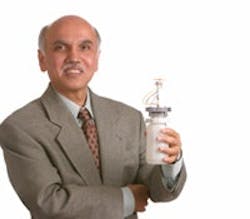Trifluoromethane Byproduct May Go From Bane To Boon
Fluoroform plagues producers of polytetrafluoroethylene, polyvinylidene fluoride, refrigerants and other fluorinated products. The compound, which also is called trifluoromethane, CF3H, and HFC-23, is a large-volume byproduct that poses significant disposal issues. It is a stable greenhouse gas with a global warming potential estimated to be about 11,700 times greater than that of carbon dioxide, note researchers at the University of Southern California (USC), Los Angeles. So, chemical makers can't release it and many store sizable quantities of the material. G. K. Surya Prakash (Figure 1), a professor of chemistry at the university and director of the USC Loker Hydrocarbon Research Institute, saw the fluoroform as an untapped resource. He led a team of researchers that now has developed a way to use CF3H to create valuable chemicals.

